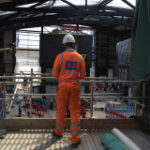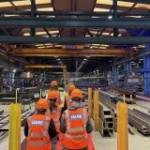Robert Lemming is managing director for public sector and life sciences at Mace Group
Life sciences construction has emerged as one of the UK’s fastest-growing specialist sectors. Development is booming across the Golden Triangle of London, Oxford and Cambridge, as well as emerging clusters in Manchester, Bristol, Edinburgh and Cardiff. But these highly technical buildings – which traditionally consume vast resources and energy – are now being reimagined through circular-economy principles.
“By incorporating circular principles from the outset, new facilities can serve as models of innovation”
Life sciences facilities have traditionally followed linear construction paths – design, build, operate, dispose – resulting in significant waste and inefficient resource use. With stringent regulatory compliance requirements and the rapid pace of scientific advancement often demanding frequent retrofits, these buildings present unique circular-economy challenges.
For over two decades, I’ve witnessed life sciences facilities evolve into increasingly complex environments. The specialised nature of these facilities, with mechanical systems and rapidly evolving technological needs, has made implementing circular principles challenging – until now.
Three key areas for circular innovation
Build and fabric
Unlike standard commercial buildings where aesthetics often drive design, life science facilities are governed by function. This creates opportunities for component standardisation and material reuse.
Mace’s supply chain partners have developed innovative approaches to material recovery, including the reclamation and redeployment of raised access floor tiles from demolition projects. Approximately 90 per cent of ceiling tiles from decommissioned laboratories can be reused after inspection, cleaning and refinishing, with suppliers offering 25-year warranties and expected lifespans exceeding 50 years.
MEP services and energy recovery
The high energy intensity of laboratories presents significant opportunities for circular energy systems. Mass spectrometers, incubators and autoclaves generate substantial heat that can be captured and redirected.
By strategically zoning equipment based on function, facilities can optimise both equipment utilisation and energy recovery potential. Some facilities have achieved energy savings of up to 30





